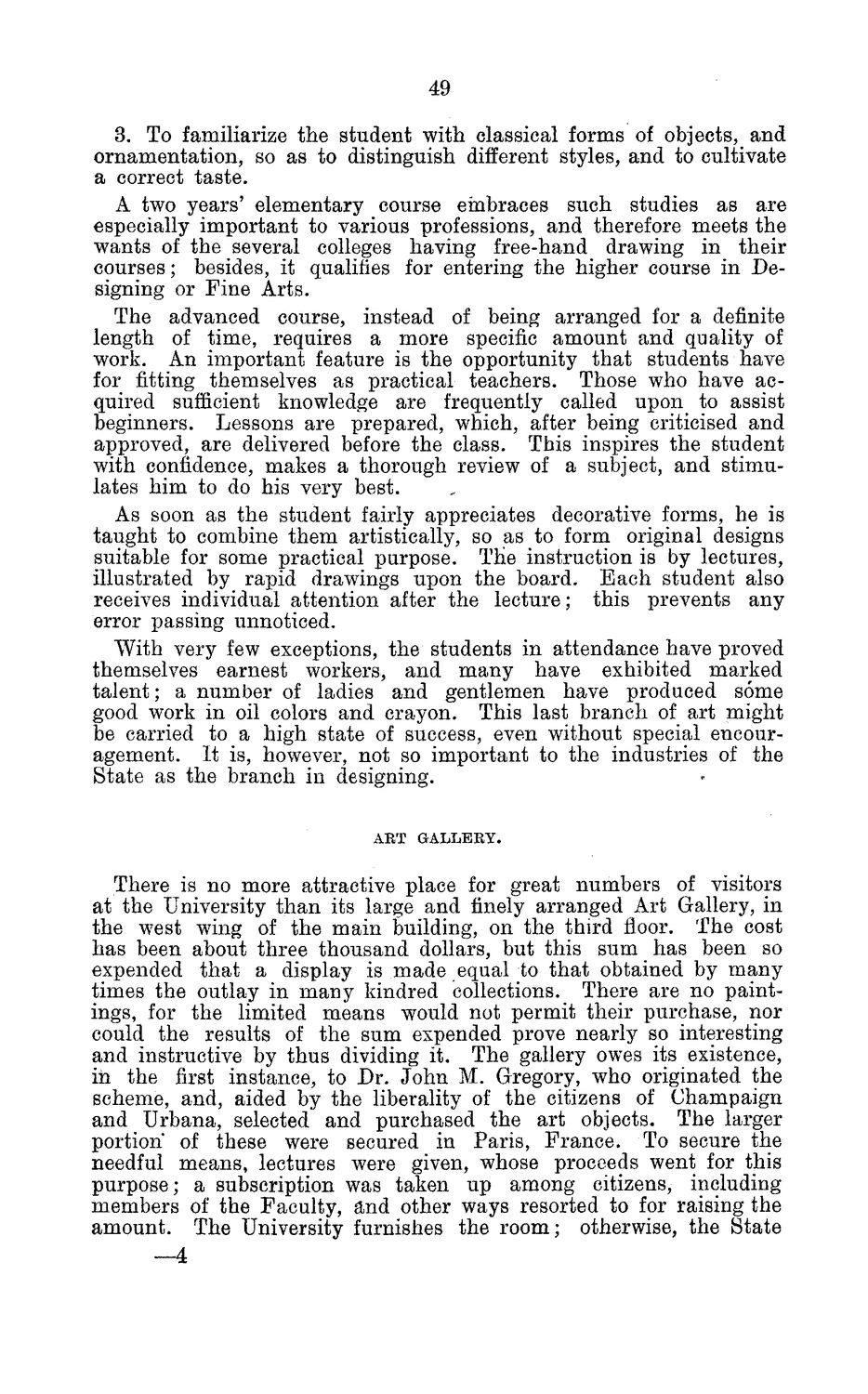| |
| |
Caption: Board of Trustees Minutes - 1884
This is a reduced-resolution page image for fast online browsing.

EXTRACTED TEXT FROM PAGE:
49 3. To familiarize the student with classical forms of objects, and ornamentation, so as to distinguish different styles, and to cultivate a correct taste. A two years' elementary course embraces such studies as are especially important to various professions, and therefore meets the wants of the several colleges having free-hand drawing in their courses; besides, it qualities for entering the higher course in Designing or Fine Arts. The advanced course, instead of being arranged for a definite length of time, requires a more specific amount and quality of work. An important feature is the opportunity that students have for fitting themselves as practical teachers. Those who have acquired sufficient knowledge are frequently called upon to assist beginners. Lessons are prepared, which, after being criticised and approved, are delivered before the class. This inspires the student with confidence, makes a thorough review of a subject, and stimulates him to do his very best. As soon as the student fairly appreciates decorative forms, he is taught to combine them artistically, so as to form original designs suitable for some practical purpose. The instruction is by lectures, illustrated by rapid drawings upon the board. Each student also receives individual attention after the lecture; this prevents any error passing unnoticed. With very few exceptions, the students in attendance have proved themselves earnest workers, and many have exhibited marked talent; a number of ladies and gentlemen have produced some good work in oil colors and crayon. This last branch of art might be carried to a high state of success, even without special encouragement. It is, however, not so important to the industries of the State as the branch in designing. ART GALLERY. There is no more attractive place for great numbers of visitors at the University than its large and finely arranged Art Gallery, in the west wing of the main building, on the third floor. The cost has been about three thousand dollars, but this sum has been so expended that a display is made equal to that obtained by many times the outlay in many kindred collections. There are no paintings, for the limited means would not permit their purchase, nor could the results of the sum expended prove nearly so interesting and instructive by thus dividing it. The gallery owes its existence, in the first instance, to Dr. John M. Gregory, who originated the scheme, and, aided by the liberality of the citizens of Champaign and Urbana, selected and purchased the art objects. The larger portion of these were secured in Paris, France. To secure the needful means, lectures were given, whose proceeds went for this purpose; a subscription was taken up among citizens, including members of the Faculty, and other ways resorted to for raising the amount. The University furnishes the room; otherwise, the State —4
| |